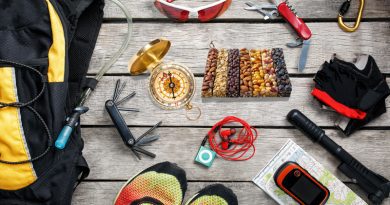
What are the different types of canoes and what are they best used for?
Paddles and Paths: Exploring the Different Types of Canoes and Their Uses
What are the different types of canoes and what are they best used for? This question drifts through my mind as I carefully tie my canoe to the roof of my old truck. Each canoe on the water has its story, shaped by its design, purpose, and the adventures it facilitates. Knowing which canoe to choose is akin to selecting the right tool for the right job—it enhances the experience, ensuring both safety and enjoyment.
Understanding the Canoe Spectrum
Choosing the perfect canoe is an endeavor that requires understanding the subtle complexities and distinct purposes each type serves. The diverse range of canoes available today is designed to cater to specific water conditions, paddler skill levels, and types of canoeing activities. Here’s a deeper look into the types of canoes and how to navigate the options and obstacles each presents.
Detailed Insights into Canoe Types
Recreational Canoes: Ideal for beginners and those who enjoy leisurely paddles in calm waters, recreational canoes are the essence of stability and ease of use. Typically wider and shorter, these canoes offer a large, comfortable sitting area and are forgiving in stable conditions like small lakes or gentle rivers. However, their design limits their performance in rough waters, where greater maneuverability and robustness are required. They are not designed for speed or handling challenging waves but excel in providing a safe and enjoyable experience for family outings and fishing.
Touring Canoes: Engineered for endurance and efficiency, touring canoes are longer and narrower than their recreational counterparts. This design enhances their ability to cut through water more efficiently, making them perfect for covering long distances on larger bodies of water, such as big lakes or coastal waters. Their length provides ample storage space for gear, making them suitable for multi-day trips. The flip side is that their size can make them cumbersome in narrow or confined waterways and less convenient for spontaneous or casual trips.
Whitewater Canoes: Built to conquer the vigorous environments of rapid rivers, whitewater canoes are robust and highly maneuverable. They often feature a pronounced rocker, which means the bow and stern are curved upwards to allow better handling over waves and in tight spots. These canoes are made from durable materials to withstand bumps against rocks and other rough interactions. While excellent for adrenaline-pumping rides in rough waters, their specialized design makes them inefficient and unnecessarily bulky for calm waters.
Racing Canoes: Sleek and built for speed, racing canoes are long and extremely narrow, which allows them to move through the water at high speeds. Due to their lack of stability when compared to wider canoes, more experienced canoeists are typically the ones who use them. The challenge with racing canoes lies in their handling; they require skill and precision to control, making them unsuitable for leisure paddling or rough conditions where stability is crucial.
Navigating the Options and Implementing Solutions
When selecting a canoe, the process involves more than appreciating the physical aspects—it’s about matching your needs and aspirations with the right type of vessel:
- Assess Your Needs: Begin by evaluating what you primarily need the canoe for. Whether it’s serene lake trips, long-distance adventures, fishing, or exhilarating river runs, each activity might require a different type of canoe. Understanding your main purpose helps narrow down the choices.
- Consult with Experts: Visiting local paddling shops or joining clubs can provide valuable insights. Experienced paddlers and professionals can offer advice based on your interests and abilities. They can also highlight the pros and cons of different canoe designs based on their vast experiences.
- Test Different Canoes: Where possible, try to test various types of canoes. Many paddling shops offer rental services or demo days where you can try different models. This hands-on experience is invaluable and can significantly influence your decision by highlighting how each canoe handles in real conditions.
- Consider the Build Material: The material of the canoe impacts not just its performance but also its portability, durability, and maintenance. For instance, fiberglass canoes are lightweight and fast, while polyethylene canoes are heavier but more durable. Each material has its benefits and drawbacks, depending on your use-case scenarios.
By carefully considering these factors and understanding the different types of canoes and their specific uses, you can make a well-informed decision that enhances your paddling experience and meets your canoeing ambitions.
Essential Resources
To make an informed choice, you’ll need access to several resources:
- Paddling Gear Retailers: For purchasing canoes and receiving tailored advice.
- Canoeing Workshops and Expos: To learn from and interact with seasoned paddlers.
- Online Forums and Reviews: For community insights and experiences with different canoes.
Concluding the Voyage
Understanding the different types of canoes and their intended uses is more than just an exercise in knowledge—it’s about matching your passion with the right partner to carry you through the waters. As I unfasten my canoe and prepare to slide it into the lake, I reflect on the journeys made possible by this simple yet profound choice. Whether gliding silently through a mist-covered lake at dawn or navigating the frothy spray of a bounding river, the right canoe becomes an extension of one’s own adventurous spirit. Choose wisely, paddle hard, and let the water’s song guide you forward.






